Most people these days don’t have a lot of time for meditation. The week is divided between work, caring for their family, and relationships. From what I have seen, all methods of meditation can be helpful to us. There are a few ways, however, that metta, or Buddhist loving kindness meditation especially matches our needs here and now…
Category Archives: Essays
Healing the World Soul
I think of where we are also as a spiritual place. There is a level to our being here that could be called the group soul of this country. On that level, there is a great deal unanswered for, legacies that only occasionally appear in dramatic ways, but that are present in our lives, in our attitudes, in our homes and games, and diet, and economics, and education.
Knowing the World As a Sacred Place
An Invitation to the Vajrayana View
We are not here on Earth to be alone, but to be a part of a living community, a web of life in which all is sacred… this is something we each need to rediscover and honor anew… – Llewelyn Vaughn-Lee
If we begin with the view that this world is sacred, then everything that spiritual traditions teach us follows naturally.
The State of Wonder
Wonder is a state of mind in which we do not look at reality through the latticework of our memorized knowledge, and in which nothing is taken for granted…
Wonder, rather than doubt, is the root of all knowledge… – Abraham Joshua Heschel
Love is the Eye That Sees Beauty
For many, the days and nights here are experienced as moving from the mundane, and the commonplace, to states of want. The usual starting place is one of ordinary life, with only brief moments of being uplifted by some heroic feat in sports, or beauty in music, or in nature, and then back to what are seen as being plain lives…
Why compassion is the most important thing in the world
I think most people could tell you, after having lived some years on this earth that what really lasts in memory is not so much what people do, but the goodwill they share with us. When we’re treated with kindness, it stays with us. It can nurture and strengthen us for a long time. Deprived of love, we wither, or become twisted. Cared for, we are healthy and we thrive. After a while we know that love is essential for living.
The Empowerment of Compassion
Compassion is that unique human quality that expresses our kinship, and that gives us strength and hope…
Joy is the food of the bodhisattvas
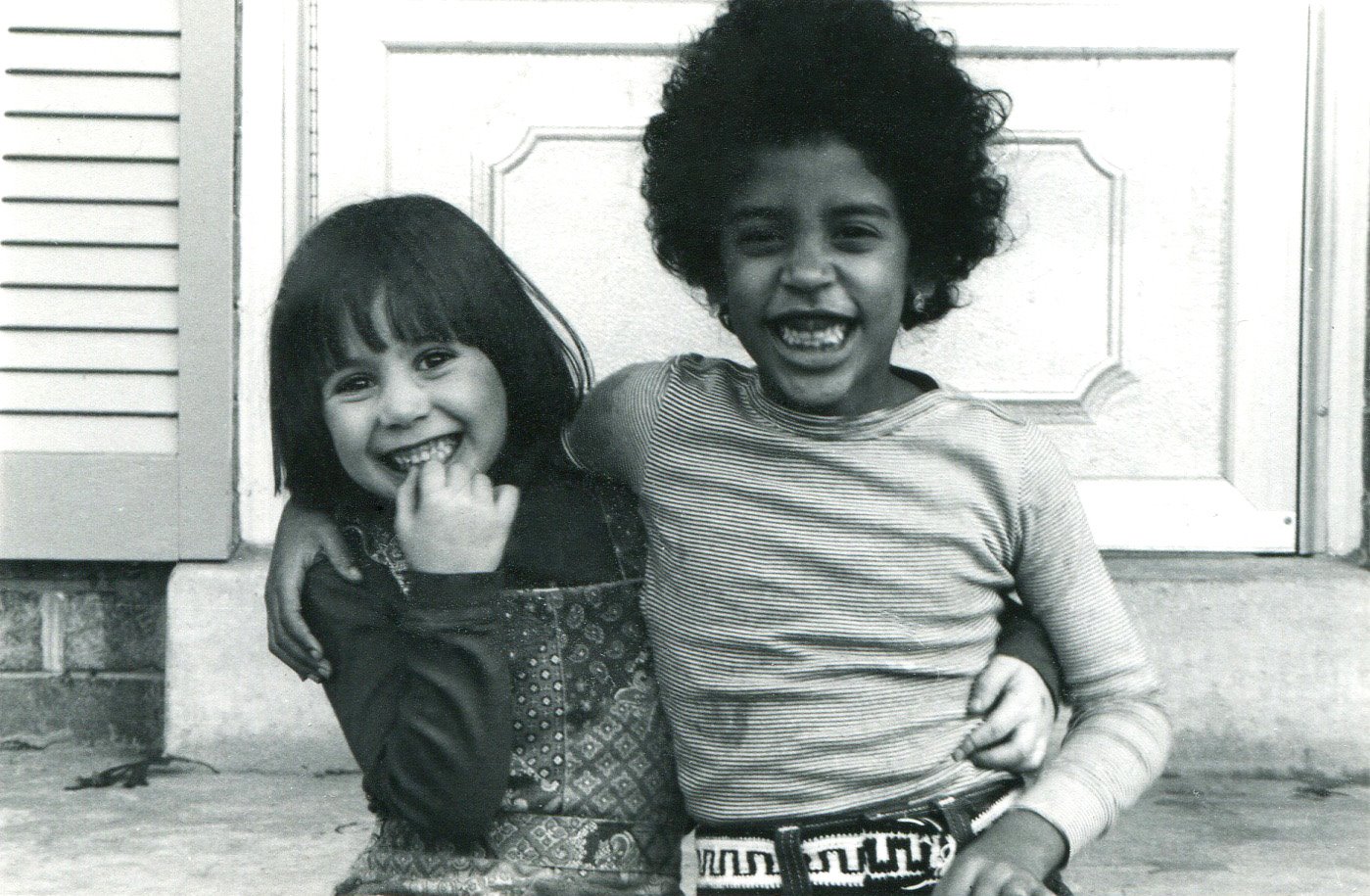
On nourishing ourselves with joy – for all my activists friends
If we want to be as effective as we can be in our work, we need to be nourished by what is beautiful, by the best things this life has to offer…
Cultivating Joy
Cultivating joy has a reputation in Buddhism for being an easy practice, one that anybody can do, and that really takes just a few moments. Just sit back and think about some of the great things that people have done, and are doing now, or the beauty that is in this world…
Freedom of Mind – the Root of the Social Gospel
For Dr. David Hilfiker, with photographs by Frank Espada
‘We belong to each other…’
I. The social gospel defined
The social gospel is the view that we are made to care for each other; that we are here to protect, support and encourage each other; to love, nurture and celebrate every one of our family, from birth, through all the stages of life, in struggle and difficulty, and in times of ease and success.
The Metta of Martin Luther King
Part I – love as a method of personal and social transformation; Part II – An all-encompassing method; & Part III – A world perspective
I thought it might be interesting to sketch out a few notes on the parallels between Dr. King’s ideas, and the teachings on metta. Both show us love as a method of personal and social transformation. There are a few places where they overlap, and some ways they can potentially compliment each other.
Interdimensionalty in Buddhism and in American Cinema
“If the doors of perception were cleansed,
all things would appear as they are, infinite…” – William Blake
In a recent movie, Tomorrowland, a young woman touches a magical medallion, and is transported to another world, where it is safe, beautiful, and enlightened. When she lets go of the button, she’s back in her ordinary world. When I first saw this, I thought immediately of how it was just like the working of mantra in Buddhism – under the right circumstances, it can shift a person’s awareness immediately, and produce the vision of a Pure Land that has been right here all along.
Rumi and Metta – Showing the Path of Love
I have faith that if I begin to speak about Rumi and metta, loving kindness practice, what is here and what I want to say will become clear. As Rumi said:
Let yourself be drawn
by the silent pull
of what you really love…
Sacred outlook – Seeing beyond ordinary perception in modern culture, and American Buddhism
‘Beware of confining yourself to a particular belief and denying all else, for much good would elude you – indeed, the knowledge of reality would elude you. Be in yourself for all forms of belief, for God (Truth) is too vast and tremendous to be restricted to one belief rather than another.’ – Ibn ‘Arabi
A Basic Method of Meditation
Meditation – the cornerstone of the contemplative life
I always enjoy reading the basic meditation instructions from noble teachers because, while they may seem simple, I know there is a great richness to them. What they are describing in these apparently simple teachings are the cornerstone of their contemplative life and practice. And they invite us with these instructions to unfold the fruit of the practice for ourselves…
The Metta Sutta
He or she who wants to attain peace should practice being upright, humble, and capable of using loving speech. He or she will know how to live simply and happily, with senses calmed, without being covetous and carried away by the emotions of the majority. Let him or her not do anything that will be disapproved of by the wise ones.
(And this is what he or she contemplates:)
Metta Bhavana – Loving Kindness Meditation
Introduction
In the centuries after the Historical Buddha, his followers developed a way to cultivate love step by step, until it includes all beings…
Mindful Breathing as a Loving Kindness Practice
Breath meditation and loving kindness practice are usually taught separately, however it can be greatly healing to combine these two practices…
Loving Kindness Practice
{In more detail} Introduction
There is a light in the mind when we love selflessly, no doubt about it. Love is what lets us see beauty. Delighting in others is a kind of enlightenment, we could say, and that light is sustenance; it brings happiness and well being to the heart and mind…
The step-wise development of love for oneself
The general idea presented in traditional teachings on metta, loving kindness practice is that we start with what is easy, and go from there. There is a process of gradual development. Likewise, in cultivating metta for oneself, we can take a gradual approach…
Three bodhicitta poems
at once
it is the sun and moon
the sun and the rain
that brings everything out beautifully…
On Recording Buddhist Teachings

This all started innocently enough… Back in 2010, I was working at a local bookstore, spending many hours a day looking at small print, and cleaning and pricing books. On account of this, my eyesight started to suffer, and after work I found it more difficult to read. This made me think of what I would miss most of all if I couldn’t read…
The Essential Characteristics of Buddha Nature
Based on the teachings in the Uttara Tantra Shastra
All beings are equally endowed with Buddha Nature. It is not something that saints and sages have in a greater measure, and ordinary people have less.In all places and times, in all cultures, for all people, this essential, perfect, true nature is exactly the same. Seeing this at once removes both self denigration, and any pride we may have.
Nine Similes on Buddha Nature
The heart of buddha abides in the hollow of delusions
It can be understood by these images:
Recording The Perfection of Wisdom in Eight Thousand Lines
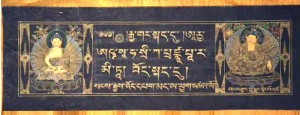
In 2010, I began recording Buddhist texts to listen to and reflect on. Among these was the first chapter of The Perfection of Wisdom in Eight Thousand Lines, and the Verses on the Perfection of Wisdom…
An Introduction to Mahayana Buddhism
Mahayana means ‘the great way’, that aims to benefit all people, and all forms of life. This word comes from one of the ways a person can practice Buddhism. The motivation for their meditation, prayers, ritual and mantra can be not just for their own sake, but for the sake of all their precious family, and for the sake of all beings
An Introduction to Buddhist Prayer
In America, and in the West in general these days, people don’t usually associate Buddhism and prayer. We usually think of Buddhism as a tradition that teaches quiet sitting meditation, and it is certainly that. Right below the surface, however, we find that there is a great deal of prayer in Buddhism.
Saints East and West

{A brief essay on Saints, outlining their nature and activity, written as an introduction to the prayers of the Buddhist Mahasiddha Tang Tong Gyalpo.}
“Man generally is not conscious of the power he has. When a man becomes conscious of that power, he is able to do things which people cannot ordinarily accomplish.” – Hazarat Inayat Khan
A Buddhist Commentary on the Prayer of Saint Francis
My wanting to write a little about Buddhist and Christian prayer in general, and the Prayer of Saint Francis in particular comes from the hope and trust that others can engage this beautiful prayer more deeply, and bring forth its benefits for themselves and others…
On Mythological Time and Space
With our ordinary sense of time, events happen one after the other. Looking ahead, we make plans, and looking back, we measure how far we are now from an experience according to the clock, or calendar. Mythological time though is something completely different. In mythological time, every story that’s been told, of sacred adventures, is about what is happening now, and eternally, and in all times and places…
Understanding Metaphor in Spiritual Teachings and Practice
Everyone who engages spiritual teachings faces the challenge of understanding metaphor. Far from just being a need for academics studying poetics, there is a great difference between those who understand symbolism and those who do not…
The Esoteric Aspect of Connecting With a Tradition
From the outside, when we see a person connecting with a Tradition, it looks fairly straightforward, and self evident. We may see them going to church, or to a temple; on a retreat, or pilgrimage; we may find them joining a candle light procession, reading scriptures or sutras or inspired poetry in time set apart, or having a daily meditation practice. This much can be seen.
Within the experience itself however, there is a richness that is subtle, and tangible. This is less often talked about, and so I’d like to say something about it here…
The Avatamsaka Sutra and Buddhist Tantra
There are two ways a person can go about understanding Buddhist teachings. One is to study the sutras and commentaries, to listen to teachers and try to make sense of what they are saying on an intellectual level. The other way is to practice in line with what has worked for people in the past, all the way back to the Founder of the Tradition. When someone takes this second path, and they start to get some results, their reference point is then their own experience.
Sitting Practice and Sacred Outlook
If we practice sitting meditation with Sacred Outlook, we are sitting in the Pure Land, of light and peace. Just as the samsaric world comes from our mind, so does the experience of this being a Pure Land…
Leaving One’s Small Room, and Entering the Larger World
For me, the Avatamsaka Sutra teachings, and especially the practices that lead a person to experience what they say in that text make clear that we are so much more than we believe when clinging to ordinary views, of ourselves, and our world…
Buddhist Paradigms
To begin, a view is they way we see ourselves, and each other, and this world we live in. These are the maps we use; the way we orient ourselves. Another word for this is our paradigm…
Deconstructing Fear
I heard an interesting point made about fear, from the teacher Donald Rothberg, that released something, and set me thinking about fear, and other emotions, and how we can skillfully work with them…
The Power of Peace

With diamond clear intention, instill faith everywhere. With mirror-like wisdom, stabilize all chaotic minds. – Lama Je Tsongkhapa
Metta and Courage – Unfolding the Qualities of Love
Whenever we have a challenge, we need to bring out what’s contained in that one word, ‘love’. We have all these treasures within that we can draw from, qualities we need when things are uncertain or difficult…
The Great Bridge to Universal Love
Of the categories in metta, or Buddhist loving kindness practice, of self, friends and those closest to us, neutral people, those we have difficulty with, and all beings, the one that gets talked about the least is clearly the neutral person…
Universal love, the ground and culmination of our practice
When we first hear the ideal of universal love for all beings, our reaction might be one of disbelief, or doubt that we could ever approach such a state…
Loving your enemies – returning good for harm
The idea of responding to being insulted or abused with non-reactivity, and then even with love doesn’t come along in Buddhist practice until what they would call an advanced stage. By contrast, it’s right there, plainly spoken in the Christian teaching, as loving one’s enemies. To me, there’s something beautiful about this, in that the goal, of having a universal kindness and goodwill is taught by Jesus right from the beginning in Christianity. At the same time, there’s a great benefit to having a step by step method to work with, to cultivate such love, that would otherwise seem unapproachable. It’s like having a map through the terrain to where we would go…
As Long As There is a Self, Altruism is the Ideal Practice
When we realize the fruition of spiritual practice, we will no longer identify with the false self. Knowing the great value of all of life, and being inseparably connected to all others, we will then spontaneously engage in helpful action…
When we change the way we view the world, we change our experience
I had an interesting experience recently that was worth writing down…
Towards Wholeness and Greater Love
A Commentary on Five Lines of Teaching by Padampa Sangye
Pith instructions are like seeds we can take and cultivate in our contemplative lives. When we find a teaching that matches where we are in our lives at a particular time, something stirs in our depths, and another step can be taken towards wholeness, fulfillment, peace, and the realization of our fundamental nature…
Practice Dharma Without Delay, and Practice It Purely
The awareness of mortality
Living gives us many unknowns, and the most compelling of these is the whole matter of death…
In Praise of the Precepts
{Note: in this piece, one can substitute the words sila, vinaya, ethics, ethical sense, moral sense, morality, virtue, fundamental goodness, discipline, conduct, moral guidelines, or any other term with the same meaning.}
Homage to the precepts that give life…
Readings on Ethics – Preface
The Beautiful Path
There is a great need these days for the study and practice of ethics. The universal values of caring for each other, and for this sacred earth have always been needed, but they are especially called for when life has gotten out of balance. We turn again to traditional teachings, which are our precious inherited wisdom. By changing the way we live, they all tell us, we can restore health on personal and collective levels…
Ethics and the Purification of Karma in Buddhsim
No presentation of Buddhist teachings would be complete without the mention of ethics as integral to this Path. And the practice of ethics in Buddhism necessarily includes both karma, or causality, and the purification of the effects of past mistakes.
The Most Efficient Way to Stop Suffering
In the Buddhist teachings on the Four Right Efforts, it’s taught that the first of these, prevention is the most efficient way to keep ourselves and others from harm. We find the straightforward logic of this in many areas of life…
The Discourses of the Buddha from the Pali Canon
Good news, my friends. The last 3 ½ years, I’ve been recording my favorite Buddhist teachings from the Pali Canon, and I am able to share these with you today. May they be a blessing in your life, and in the lives of all those you love.
A Simple Visualization
The Refuge Tree
This can be used for taking refuge, or for any other practice we do. It may be especially good for people with a connection to different teachers, and traditions, honoring them all, and receiving blessings from them…
Recollecting the Qualities of the Three Jewels, Praise, and Taking Refuge
Homage to the Founder,
the Endowed Transcendent Destroyer (of defilements),
the One Gone Beyond,
the Foe Destroyer,
the Completely Perfected, Fully Awakened Being,
the Glorious Conqueror, the Subduer from the Shakya Clan
The Profound Practice of Taking Refuge
The practice of taking refuge in the Buddha, the Dharma, and the Sangha is thought of as a basic teaching. Verses in Pali or Tibetan, and now English are recited every day by millions all over the world, before teachings. This potentially can be something that is just glossed over, or it can go deep, and serve as a foundation for the whole of our whole spiritual life…
Refuge in the Noble Sangha
Once we make a connection to reliable sources of protection, our destination comes into view. We begin to discover the missing piece in our pursuit of happiness, which has eluded us because samsaric refuges do not last.
– Mingyur Rinpoche
Oh Joy to Know At Last – There is No Happiness in Samsara!
For a mind that only knows cycling through experiences that can be described as the six realms, the search for happiness is endless, and bound to be disappointing, and frustrating, again and again and again. This is teaching us: There is no lasting satisfaction for a samsaric mind – one that clings to a self, and misperceives the nature of this life…
Letting Go As a Skillful Means
When it comes to separating from attachment to sense pleasures that bring us suffering as well, Buddhism is very practical. There’s a method called simply ‘letting go’ that anyone can experience the benefits of, which is encouraging every step of the way…
Islands, and the Bridge
Islands in a raging flood – Ethics, Meditation, and Wisdom
The nature of a raging flood is that it is extremely dangerous. You can see other people losing their lives to it, as well as houses, cars, and buildings being swept away. You can lose your own life to it.
The nature of an island in a raging flood is that it is a temporary place of safety, on the way to the far shore, which is the only real freedom from danger in this situation…
When there is respect for meditation
When there is a deep appreciation, respect and reverence for meditation, the Doctrine will flourish; but when the appreciation, respect and reverence for meditation decreases, the Doctrine will decline… – The Buddha
The Need for Samatha
They say that nothing moves without intention. Before we begin a project, or a way of life, or meditation, we need to know its benefits. This comes first. Once we’re convinced of these, everything else follows naturally. It may take time, and effort, but when this much is clear, there’s an ease to it as well. To that end, I’d like to say something about the need for a certain kind of meditation, that is essential if we wish to receive the fruits of Buddhist practice…
Using the Anapanasati Sutta to Cultivate Shinay
Introduction – Tending Towards Simplicity
There are a few ways in general that we can practice with the Sutra on Mindfulness of Breathing. One is to think of the 16 steps as following one after the other, organically. We can also go briefly through the steps, or the tetrads (sequences of 4 steps) and then focus just one one part, or even just one step. As Thich Nhat Hanh has said, practicing any one of these meditations can bring insight, and freedom of mind…
Distinguishing Mindfulness and Awareness
The word mindfulness is so well known these days that to use it with anything other than the commonly accepted meaning, and be understood, presents quite a challenge. It is important to make this attempt though, as I hope will become clear in what follows…
The Importance of Patience When Studying Wisdom Teachings
I remember many years ago being surprised to read the Tibetan Tradition’s understanding of the need for patience on the spiritual path…
From a letter – on wisdom and compassion
I just wanted to mention one thing you repeated in your short note- about what Goenka said about compassion developing naturally as a result of vipassana or insight- I think that, in all fairness, sometimes it happens like this, and sometimes not otherwise all Arhats would be Bodhisattvas, and that’s not yet the case…
The First Order of Business in the Middle Way Teachings – Clearing Away Wrong Views
For practical purposes, it’s helpful to know that there are two distinct teachings offered in what has come down to us as The Middle Way. One is negation-only, while the other negates and then affirms some aspect of truth…
A Key to Buddhist Wisdom Teachings – Preface
An overview
Diamond Sutra Metaphors
The Diamond Sutra has various metaphors at the end, that describe how we can train ourselves to see things as they are…
The Non-Conceptual Method
Whatever gets us to liberating wisdom is to be honored fully, for all it means for us personally, and in terms of what we are then able to offer to our loved ones…
The Continual Practice of Right View
Before, during, and after meditation
What It Means to Rely on Wisdom in Buddhism
From a letter to a friend
I may have told you in a previous message how my interest in the teachings on what are called the two truths, the relative and ultimate truth…
Preliminary Questions for the Teachings on the Two Truths
I suspect that the teachings on what are called the Two Truths are similar to many other profound, far reaching ideas in Buddhism, in that while they may be of great value to people, they have become quite abstract, embedded as they have been in academic traditions, and seemingly removed from our lives.
Like other wisdom teachings though, nothing could be further from the truth – I suspect that they describe exactly the nature of our lives here, and can be of wondrous benefit, but that they also need to be unpacked, understood, and spoken anew…
If You Want to Know the Way Out, Seek Wisdom, and Not Emotion
The provisional and the definitive teachings each have a different function in freeing us, personally and collectively, from wrong views and suffering…
The Inseparability of the Two Truths
There is an easy way to recognize the inseparable nature of the relative and enduring truth. If we begin with enlightened activity, we can see their essential unity, plain as day…
Notes from a Dharma Gypsy
On the historical and experiential development of Wisdom teachings in Buddhism
Measuring Progress in Wisdom Practice
To the extent that afflictive emotions exist,
ego grasping exists;
and to the extent that ego grasping exists,
emptiness has not been realized…
An Outline of Buddhist Traditions
Because there are a number of different types of Buddhism, it may be helpful to sketch a general outline of the Traditions. Most generally we speak of three types of Buddhism in America – the Theravada, the Zen and the Tibetan Traditions…
An Introduction to the Stages of the Path Teachings
A little over a thousand years ago, a king in Tibet saw the decline of Buddhism in his homeland, and decided to invite a great scholar from India, by the name of Atisha, to his country…
On the Nature of Vow, and the Bodhisattva Vow
Vow is an interesting word, a rich word.It has connotations of a depth of commitment; and of something solemn, and serious; a deep dedication that calls up our resources and aims them all in a single direction…
Metta and Readings on the Mahayana – Introduction
There is a natural connection that exists between the teachings on metta, from the Theravada Tradition, and the Mahayana…
Mahayana Thought Training – An Ideal Practice for Our Times
Turning Adverse Circumstances into the Path of Awakening
The Bodhisattva Thought Training Teachings
Bodhicitta, is ‘the mind of enlightenment’, the mind of freedom, happiness, and Great Love. A person who has this great heart/mind is called a Bodhisattva – one who lives to serve others with wisdom and compassion. This leads to the Thought Training teachings, that come from dedicated teachers in the past. These are ways to develop in everyday life…
A Practice That Thrives in Difficulty – An Essay
The following is based on a Traditional Tibetan Buddhist teaching for transforming suffering into the path to freedom and peace.
‘When the world and its contents are filled with evil, transform this into the path of awakening’
– from the Seven Points of Mind Training, by Geshe Chekawa, 12th Century, Tibet
‘Lord, make me an instrument of your peace; where there is hatred, let me sow love…’– From the Prayer of Saint Francis
From Sandy Hook, to Uvalde, Texas
The Staff of Wisdom and Healing Waters – A Parable
The way I figure it, either this story will be told, or it won’t. Better that it gets told, so here goes…
A Belief in the Miraculous – Preface
When I was in my 20’s, I had the good fortune to study teachings from the Western Esoteric Tradition. These included, among other things, explanations of other levels of existence, psychic development, and systems of divination. Such teachings were very helpful to me back then, as the realities they spoke of were a close match to my own lived experience
An Introduction to Mantra
Great River of Compassion
Avalokiteshvara, help me to say this rightly, for all who could benefit from it.
Mantra: I: A set of sacred syllables, repeated to attain a spiritual benefit…
In Praise of the Vajrayana
A Brief Introduction to Buddhist Tantra
The Skillful Means of the Mahayana
The Stages of the Path teachings cover the entire range of Buddhist teachings, from refuge, to teachings on liberation, to the Mahayana motivation and Wisdom. They conclude with reference to the Vajrayana, the ‘lightning’ or ‘diamond thunderbolt’ vehicle…
An Introduction to the Bodhisattva-Divinity Tara
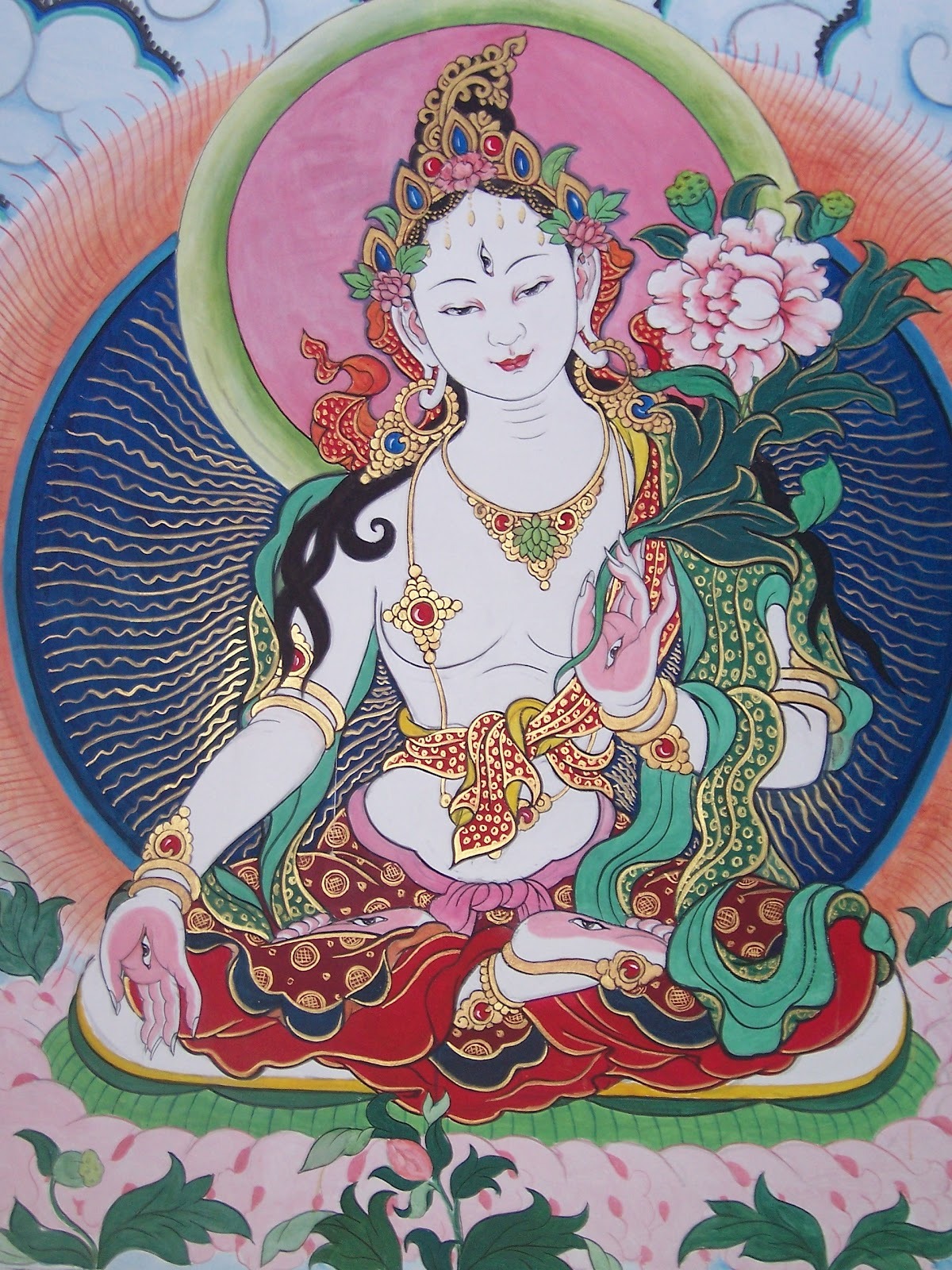
In order for us as Westerners to engage in practices that have come from the Tibetan Buddhist Tradition, without misunderstanding their nature or purpose, there are a few ideas that need to be spelled out…
Why the Buddha is Regarded as the Supreme Healer
To my mind, there are two reasons why the Buddha has been regarded throughout time as the Supreme Healer…
A Collection of Buddhist Methods for Healing
Since so many people these days are asking what they can do to strengthen their health, and to help others, I thought to offer this collection of Buddhist methods for healing. We have time now, and the strong motivation to practice, so if we connect with a Tradition, the result can only be to the good…
Continue reading
Homage to Manjushri, the Buddha of Wisdom
Homage to my guru and protector, Manjushri,
Who holds to his heart a scriptural text
symbolic of his seeing all things as they are…
On Mysticism
Meister Eckhart said, “God is a great underground river,” and the wisdom in all religions taps into this one source. – Matthew Fox
We must all become oceans now,
deep at that,
and as broad…
A Thousand Years of Miracles
For more than 2,000 years, people have been healed by calling on the name of Jesus; crutches and wheelchairs left along the road, and at sites of worship;
For 2,000 years, the laying on of hands, casting out harmful spirits, restoring life; and there have been countless interventions, visitations, apparitions, visions, in dreams and in contemplation, of Jesus, Mary, the Saints, and Angels;
Two thousand years of miracles, two thousand years, and still we don’t believe!…
In Praise of Big Love
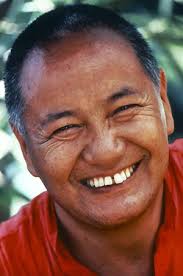
Dear Nick,
I am writing to you this evening to express my deepest thanks for the publication of Big Love. I would have written sooner, but I kept having to wipe away the tears from my eyes…
The Blessings of Paritta
The Tradition of reciting or chanting Buddhist teachings is mostly practiced in South East Asian countries, such as Sri Lanka, Malaysia, Burma and Thailand. These cultures are different from the West in that they have more natural faith in the Dhamma, from long familiarity with it. Their world view also supports their belief in the effectiveness of hearing and reciting teachings and prayers…
A few notes on faith
From Faith, Devotion, and Blessings on the Path to Liberation
Faith comes in a few different ways. First, there is the intimation of a greater truth, something in us that says, ‘Yes, this is the way to go’.
This becomes verified faith, as we follow our intuition. Our trust in a teacher or a tradition proves itself. We become healthier, more at peace, open to others and responsive.
After this, and higher than these two is unshakable faith. Having this kind of trust calms and steadies the mind.
A few notes on humility
When I think of humility, the first thing that comes to mind is receptivity, the ability to learn…
Metta and Classical Music Study
I’ve been a student of the classical guitar since the mid 1980’s, and of metta, or Buddhist loving kindness practice for almost that long. There are a number of things they have in common, and so I thought I’d bring these two subjects together, and let each shine their light on the other…
A reflection on the power of gratitude
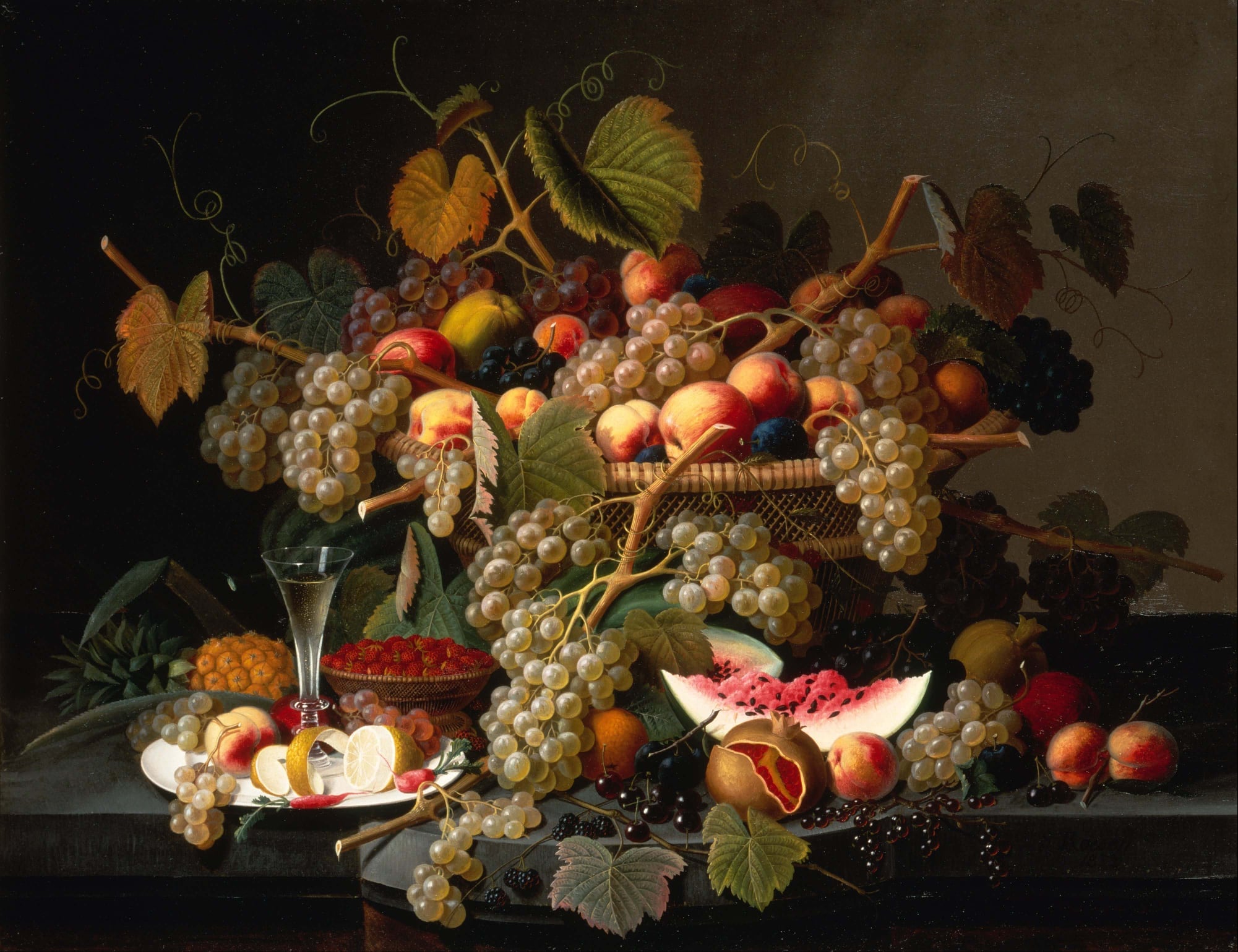
Our roots go deeper than we know
In every traditional culture, we find parents and elders teaching their children gratitude, and the essence is always the same, that of cultivating a living sense of appreciation for what we’ve received. Parents don’t do this for their own sake, instead they do it as a gift to their children. They do it because they’ve known these blessings themselves, and know that this is what will sustain future generations…
Counterintuitive Methods in Buddhist Practice
The act of generating desire to engage in the four types of right effort can sometimes involve using counterintuitive methods, employing pride, craving, conceit, and even spite whenever necessary to accomplish its aims. – Thanissaro Bhikkhu
All Dharma should act as a remedy to the delusions. – A Tibetan Buddhist teaching
Getting Excited About Sports
Is Like the Elation and Despair of Children
In this country, the usual cable tv package comes with at least two sports channels that air 24 hours a day, 7 days a week. This is despite the fact that there are a hundred things going on that are more important…
The Precepts of Love
There is so much contained in love at it’s best that I thought it would be worthwhile to write a few words about it this morning. I highlight love ‘at its best’ to distinguish it from the fleeting, partial, or limited kinds of affection we all know so well.
The love I would like to talk about is the kind we look to when we want to remember who we truly are and who we can become…
A few thoughts on having kindness towards ourselves
From a letter to a friend
When I think about it, what I want to encourage most of all, is for you to keep going with the aim to be kind to yourself. The reason I say this is that, over the years, it’s become more and more clear to me just how necessary this is.
A Midwife for Love
Combining metta and the reflection on impermanence
Taken separately, both metta, the step by step development of loving kindness, and regular reflections on impermanence have the potential to bring us a keen sense of the preciousness of life, a kind of fearlessness, and greater generosity. When they are combined though, their power is increased even more.
When it comes to birth and death
How exactly would you like things to be?
I find myself after all these years gradually coming to terms with death, and all that is revealed through its agency…
Tenderness, the Womb of the Tathagatas
If we begin with even the smallest amount of tenderness, and stay with it, and allow it to increase, eventually it will include all living beings…
Rediscovering Joy
Putting the joy back in Joyful Effort
In Buddhism, we call a bodhisattva someone who’s intent on helping others in every needed way. He or she does this through what are called the Six Perfections, which are Generosity, Ethics, Patience, Joyful Effort, Meditation and Wisdom. This is, or should be, a path of unsurpassed happiness, and mature joy, because this is not a small ambition to have. Such great love is, in fact, the fulfillment of our lives here. Sometimes, however, we lose our zeal…
Bridging the Divide Between Politics and Spirituality
It took a Sufi poet to put into words for me what I had been feeling for some time, about the limitations, or dysfunction of religions in America. It was about seven years ago that I read this verse by Unis Emrie:
Unless you can see the whole world
in a single glance,
anything you do is wrong,
even with all your religion…
A Buddhism for Progressives – Preface
Two Traditions
As the son of an activist, I learned when I was young about the need to care for others. It was part of our upbringing to talk about and to think about what was going on in our world with compassion and with a sense of responsibility. Like many other young people who were raised in the 60’s, we received from our parents and from previous generations this precious legacy of the creative struggle for human rights, dignity, and social justice…
The Glory of the Good Fight
To join in what my father’s generation called the good fight was to enter into the timeless struggle for human rights everywhere, with like-minded, courageous souls. It meant to stand with them, to march with them, to raise your voice with them, to fight along side them, and perhaps most of all to be inspired by their dedication and action, and to give your encouragement at every turn…
A Life Giving Vision
The way we’re operating right now as Americans and as a global society is unsustainable ecologically and for more and more of humanity. How do we make the systemic changes needed so that human and organizational creativity naturally lead toward sustainable and restorative practices instead of destructive ones?
What can ordinary citizens do?..
Power and Love – a Buddhist Perspective
We fear power because we associate it with aggression. It’s there in everything from militarism to abusive husbands and boyfriends, to those we say are ‘drunk with power’ – implying control, domination, and injustice. But power in itself is neutral. Power can be turned any way, and this is something we need to know, for our own sake, for that of our community, and world.
I Become We – A Confluence of Rivers
I was surprised recently to hear the phrase ‘I become we’ and it reminded me of something important, especially in these times. This is an idea that’s been made use of for generations in the Civil Rights and Labor movements, as well as in religious teachings.
Spread the Word – The Answer is Love
I first saw what has come to be known as ‘the human microphone’ during Occupy. This is where one person speaks, and those around him or her repeat it, so that others can hear. They begin with saying ‘Mic check!’ ‘MIC CHECK’, the crowd replies. This is a time when we all need to repeat the best things that we hear, a time when we all suffer and struggle together, and whatever wisdom we can gather needs to be spoken far and wide…
Getting on the same page when it comes to American history
It’s almost impossible these days for people with different political views to have a meaningful conversation. Each side is so committed to their point of view it seems there’s no basis for communication. On one news program after another, there is very little dialogue, and expressions range from bewilderment, to contempt and insults…
Reframing Modern Day Colonialism
{A brief history of colonialism for anyone in need of clarity about the past.}
At times, we here in these United States barely register the meaning of words that should make the hair on the back of our neck stand on edge. This is because we have not been taught our history, or else it has been so watered down. Take the word colonialism…
My Father’s Son
In the Fall of 2013, I started what I thought was going to be a simple project that would take me a few months: I was going to organize my father’s photographs. I had no idea at the time how this would lead me into a deeper relationship with the man who was my hero, and role model in many ways…
A Sketch of Frank Espada’s Life
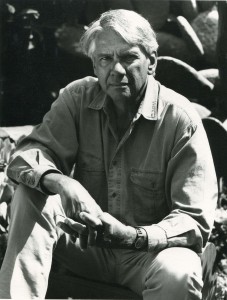
On 29th St., in San Francisco. Photo by Jason Espada
The following was written in 2014, in preparation for visits from curators, who were coming to view the entire range of my father’s work, within the space of a few short days. I took this as an opportunity to touch upon the most significant events in his life, and to celebrate the man I had come to know more fully through organizing his archive.
The Puerto Rican Diaspora
Documenting the Puerto Rican Experience in the 20th and 21st centuries
Imagine if you will conceiving of a project that would document the Puerto Rican experience across the United States… Imagine further that this project would be undertaken by someone who is widely respected as an advocate for these people, and that this person, in addition, is a first-rate photographer… Continue reading
From Eugene Smith to Frank Espada
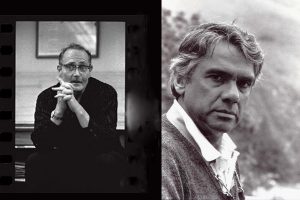
{Photo credits: Eugene Smith, by Don Getsug; Frank Espada, Big Sur, 1984, by Jason Espada}
As soon as I heard the photographer W. Eugene Smith’s voice, in a documentary produced for Japanese television, I recognized him immediately as a spiritual ancestor. It was not just what he said that was so moving, and familiar to me, but his fierce love and commitment to the people he photographed.
